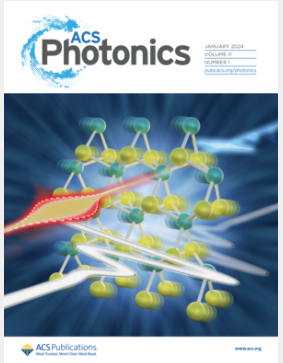In-Situ Optimization of an Optoelectronic Reservoir Computer with Digital Delayed Feedback
IF 6.5
1区 物理与天体物理
Q1 MATERIALS SCIENCE, MULTIDISCIPLINARY
引用次数: 0
Abstract
Reservoir computing (RC) is a powerful computational framework that addresses the need for efficient, low-power, and high-speed processing of time-dependent data. While RC has demonstrated strong signal processing and pattern recognition capabilities, its practical deployment in physical hardware is hindered by a critical challenge: the lack of efficient, scalable parameter optimization methods for real-world implementations. Traditionally, RC optimization has relied on software-based modeling, which limits the adaptability and efficiency of hardware-based systems, particularly in high-speed and energy-efficient computing applications. Herein, an in situ optimization approach was employed to demonstrate an optoelectronic delay-based RC system with digital delayed feedback, enabling direct, real-time tuning of system parameters without reliance on external computational resources. By simultaneously optimizing five parameters, normalized mean squared error (NMSE) values of 0.028, 0.561, and 0.271 are achieved in three benchmark tasks: waveform classification, time series prediction, and speech recognition, outperforming simulation-based optimization with NMSEs 0.054, 0.543, and 0.329, respectively, in two of the three tasks. This method enhances the feasibility of physical reservoir computing by bridging the gap between theoretical models and practical hardware implementation.数字延迟反馈光电储层计算机的原位优化
储层计算(RC)是一种功能强大的计算框架,可满足对时间相关数据进行高效、低功耗和高速处理的需求。虽然RC已经展示了强大的信号处理和模式识别能力,但它在物理硬件中的实际部署受到一个关键挑战的阻碍:缺乏有效的、可扩展的参数优化方法。传统上,RC优化依赖于基于软件的建模,这限制了基于硬件的系统的适应性和效率,特别是在高速和节能计算应用中。本文采用原位优化方法演示了一种基于光电延迟的RC系统,该系统具有数字延迟反馈,可以在不依赖外部计算资源的情况下直接实时调整系统参数。通过同时优化5个参数,波形分类、时间序列预测和语音识别三个基准任务的归一化均方误差(NMSE)分别为0.028、0.561和0.271,优于其中两个任务的基于仿真的优化,NMSE分别为0.054、0.543和0.329。该方法弥补了理论模型与实际硬件实现之间的差距,提高了物理油藏计算的可行性。
本文章由计算机程序翻译,如有差异,请以英文原文为准。
求助全文
约1分钟内获得全文
求助全文
来源期刊

ACS Photonics
NANOSCIENCE & NANOTECHNOLOGY-MATERIALS SCIENCE, MULTIDISCIPLINARY
CiteScore
11.90
自引率
5.70%
发文量
438
审稿时长
2.3 months
期刊介绍:
Published as soon as accepted and summarized in monthly issues, ACS Photonics will publish Research Articles, Letters, Perspectives, and Reviews, to encompass the full scope of published research in this field.
 求助内容:
求助内容: 应助结果提醒方式:
应助结果提醒方式:


